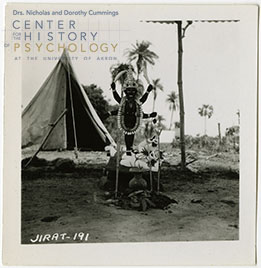-contributed by Emily Gainer, Assistant Processing Archivist/Special Collections Librarian.
In 2022, the Archives of the History of American Psychology received nearly 500 boxes of papers, films, photographs, and computer hard drives and disks from the estate of R. Allen Gardner. These papers document the Gardners’ unique research on communication with cross-fostered chimpanzees. This is one of the largest collections we have received at the Archives and it provides an excellent opportunity to see how our whole team collaborates in the intake and processing of any given collection that arrives on our loading dock.
The R. Allen and Beatrix T. Gardner papers are now open for research. CCHP staff and student assistants have digitized and made over 3,400 still images from this collection available.
History
R. Allen (1930-2021) and Beatrix T. (1933-1995) Gardner started Project Washoe in 1966. During this study, the Gardners cross-fostered the chimpanzee Washoe and taught her to communicate using American Sign Language (ASL). Washoe was raised in a trailer in the Gardners’ backyard in Reno, Nevada. The study ended in 1970.


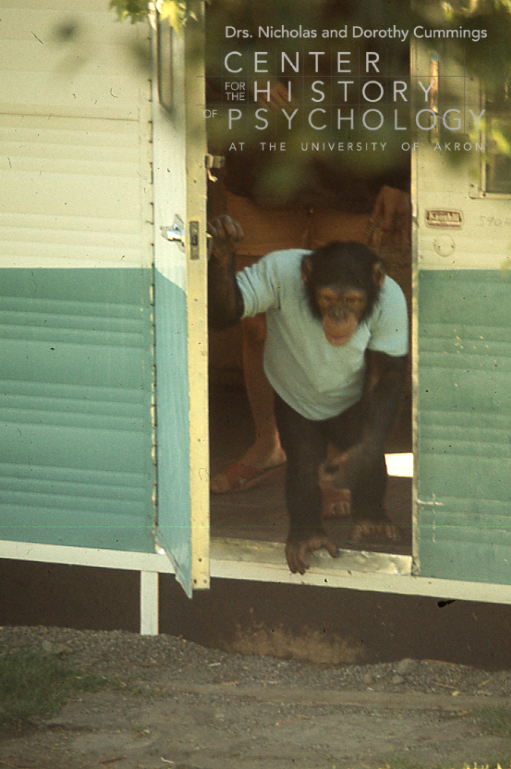
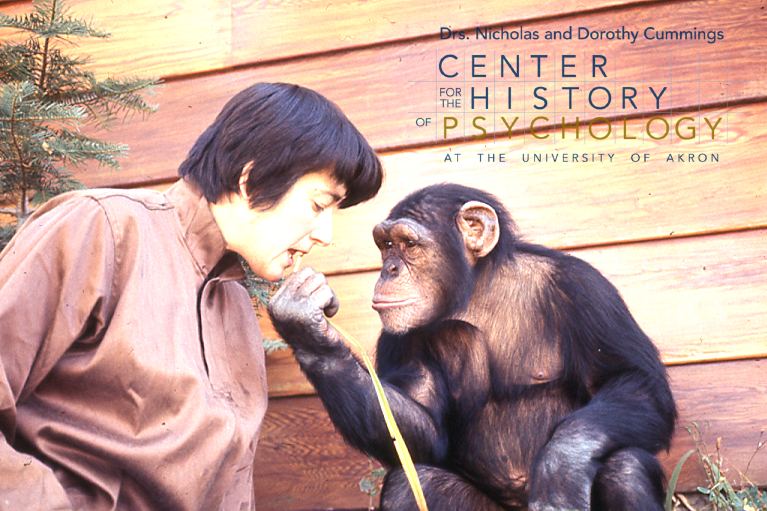
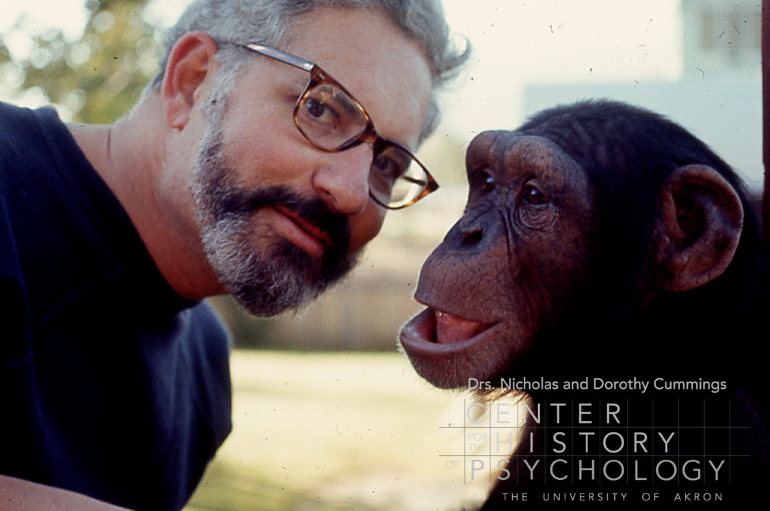
In 1972, the Gardners began a second study. The study is less well-publicized, but possibly of greater scientific significance. The Gardners began with days-old chimpanzees, carried out rigorous testing and documentation, and worked with human companions fluent in ASL. The second study involved a total of four chimpanzees over nine years. These cross-fostered chimps, raised at a ranch in Reno, included:
- Moja who lived with the Gardners from 1972-1979,
- Pili who lived with the Gardners from 1973 until his death in 1975,
- Tatu who lived with the Gardners from 1976-1981, and
- Dar who lived with the Gardners from 1976-1981.

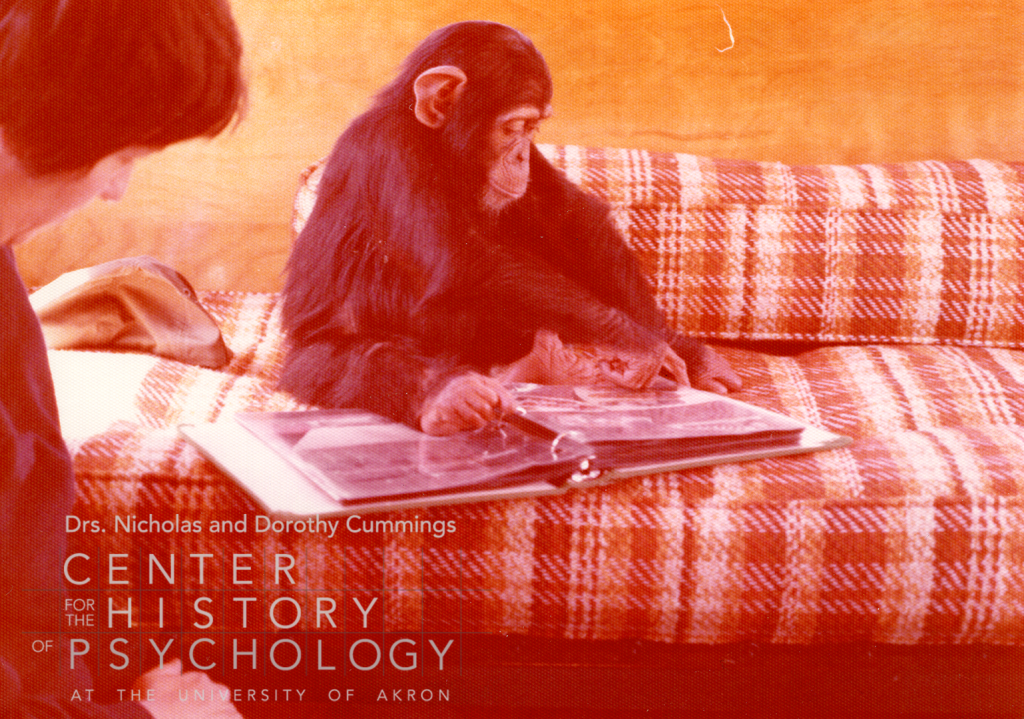
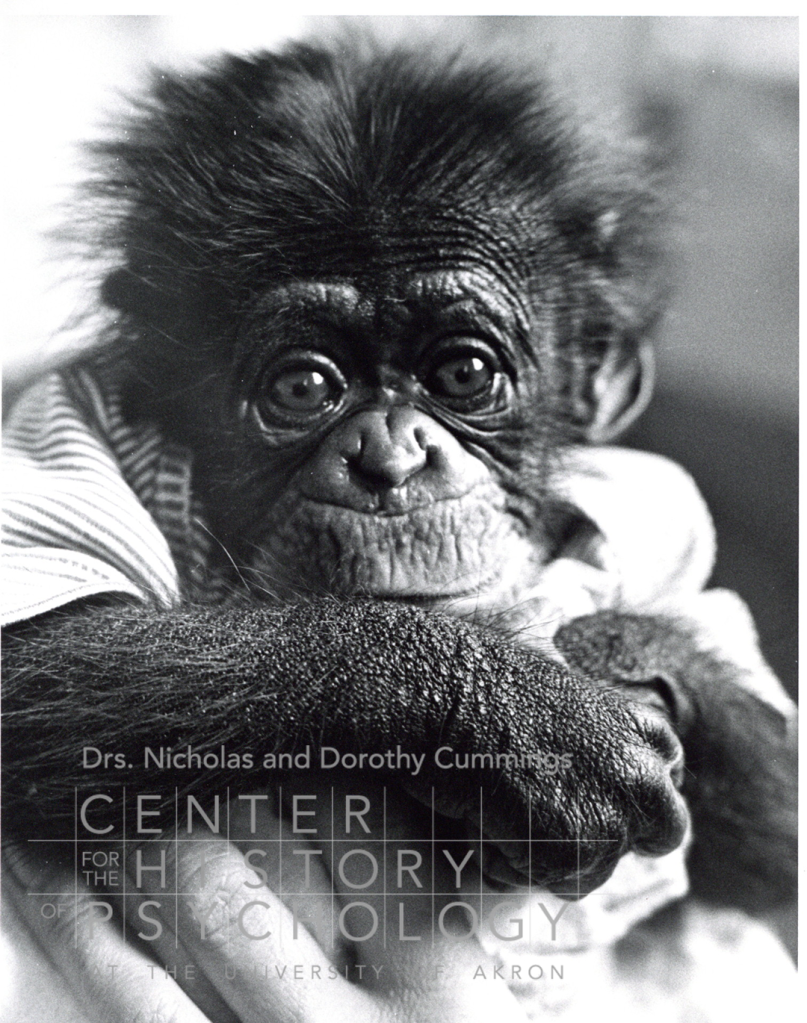
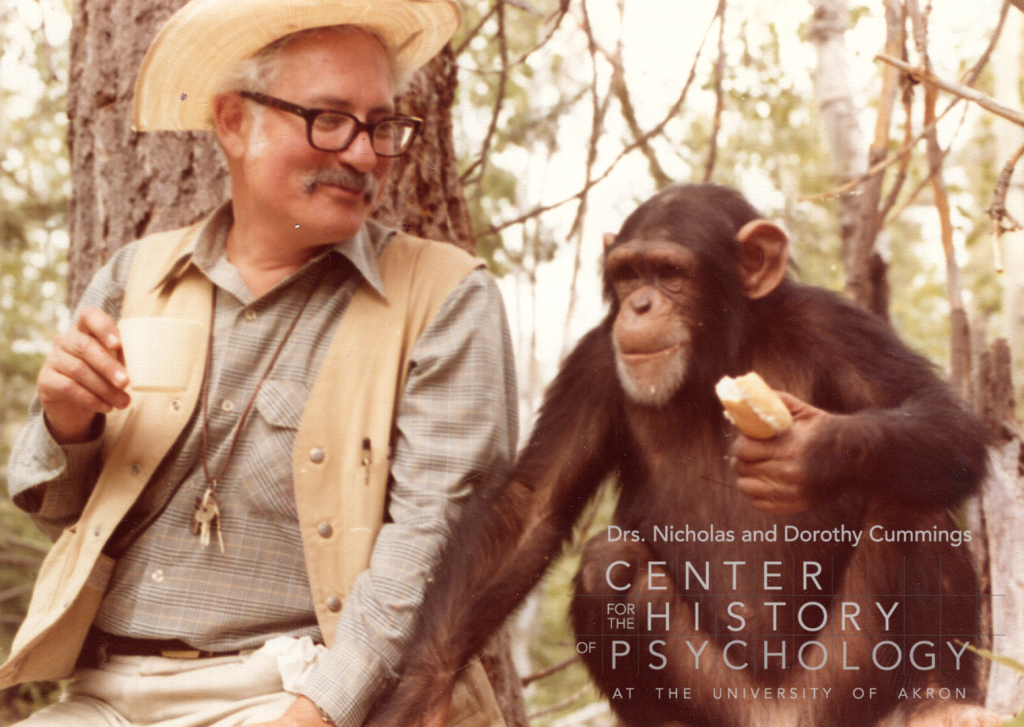
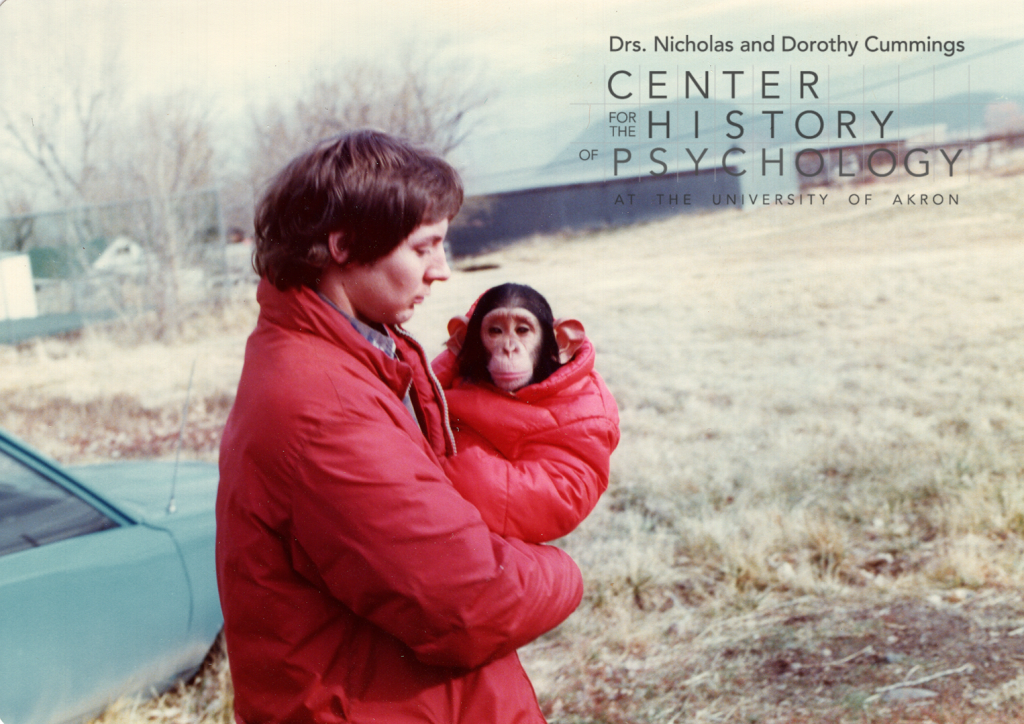

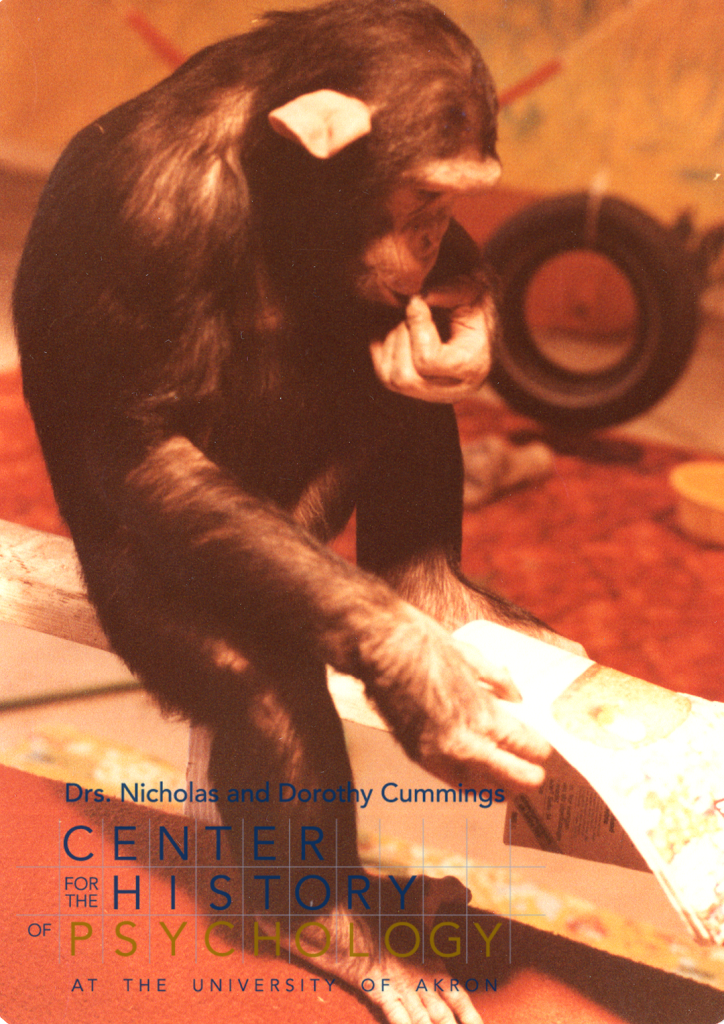
Processing timeline:
Spring 2022: Donation of 496 boxes from the Gardner estate arrive at the CCHP. Rhonda Rinehart and Emily Gainer appraise, sort, rebox, and move materials to storage.
September 2022: Emily begins archival processing, which involves organizing, preservation rehousing, and creating a finding aid to make these materials open to researchers.
Winter 2022: Emily identifies series and organizes 300 boxes into those categories. Further appraisal is performed with consultation from Cathy Faye. Student assistants help with refoldering, labeling, and reboxing materials.
Spring 2023: Series identification and organization continues. Preservation rehousing continues. Jon Endres begins organizing and digitizing approximately 400 reels of film.
Summer 2023: Student assistants begin digitizing and creating metadata for 3,000 photographs and slides. Jon begins assessing electronic files stored on hard drives, USB drives, CD-ROMS and other storage devices.
Fall 2023: Emily organizes the files within each series and arranges them chronologically and/or alphabetically. Emily begins writing the finding aid. Students continue metadata for photographs and slides.
October 2023: The finding aid is complete. Materials are made available and open to researchers.
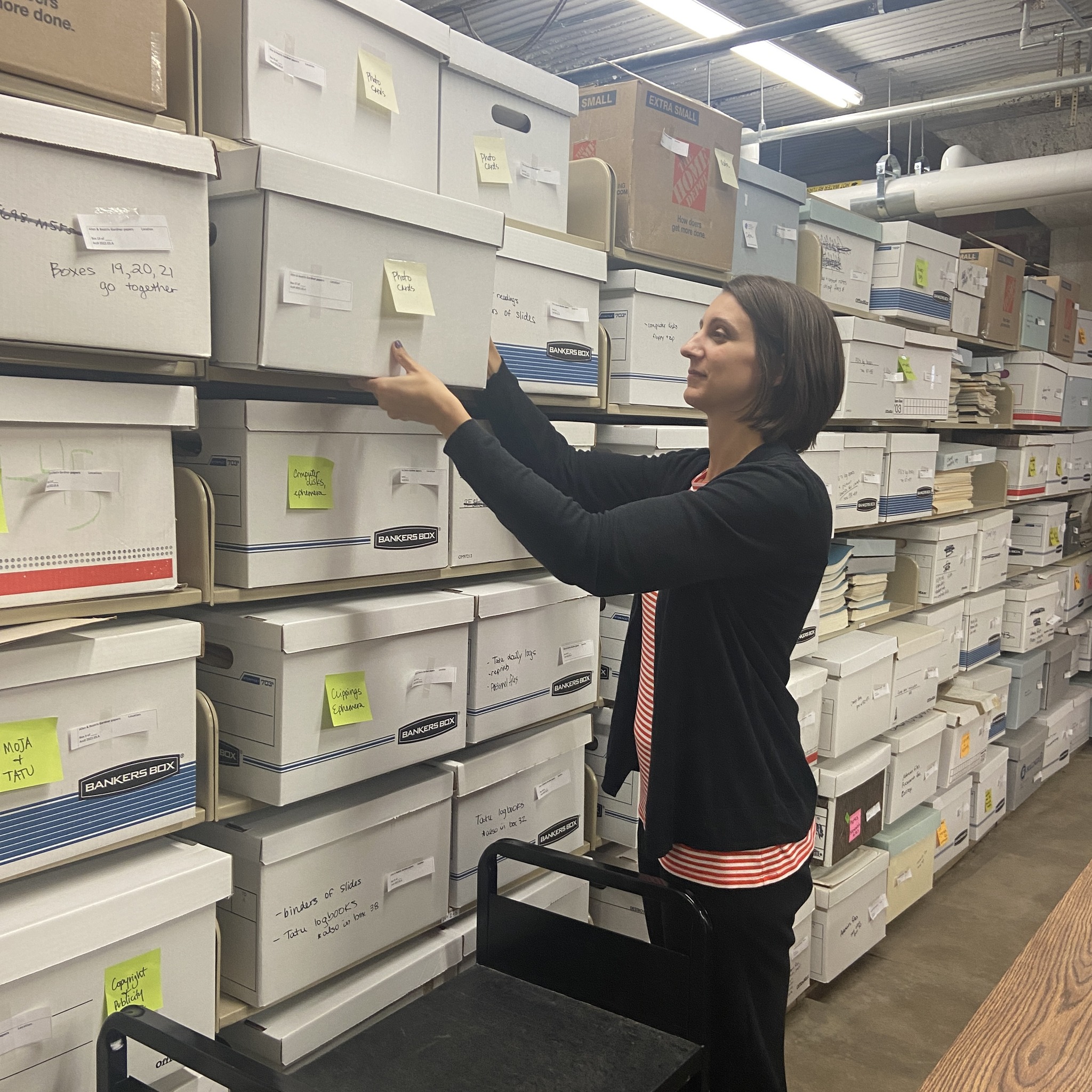




Looking back on this project, it is clear that processing an archival collection of this size and scope is a time-intensive team effort. From accessioning to rehousing, digitizing, organizing, and describing, the entire Archives staff and many student assistants contribute to making the collections we receive every day available to researchers. To access materials in the R. Allen and Beatrix T. Gardner papers, contact our CCHP reference archivist at ahap@uakron.edu.
